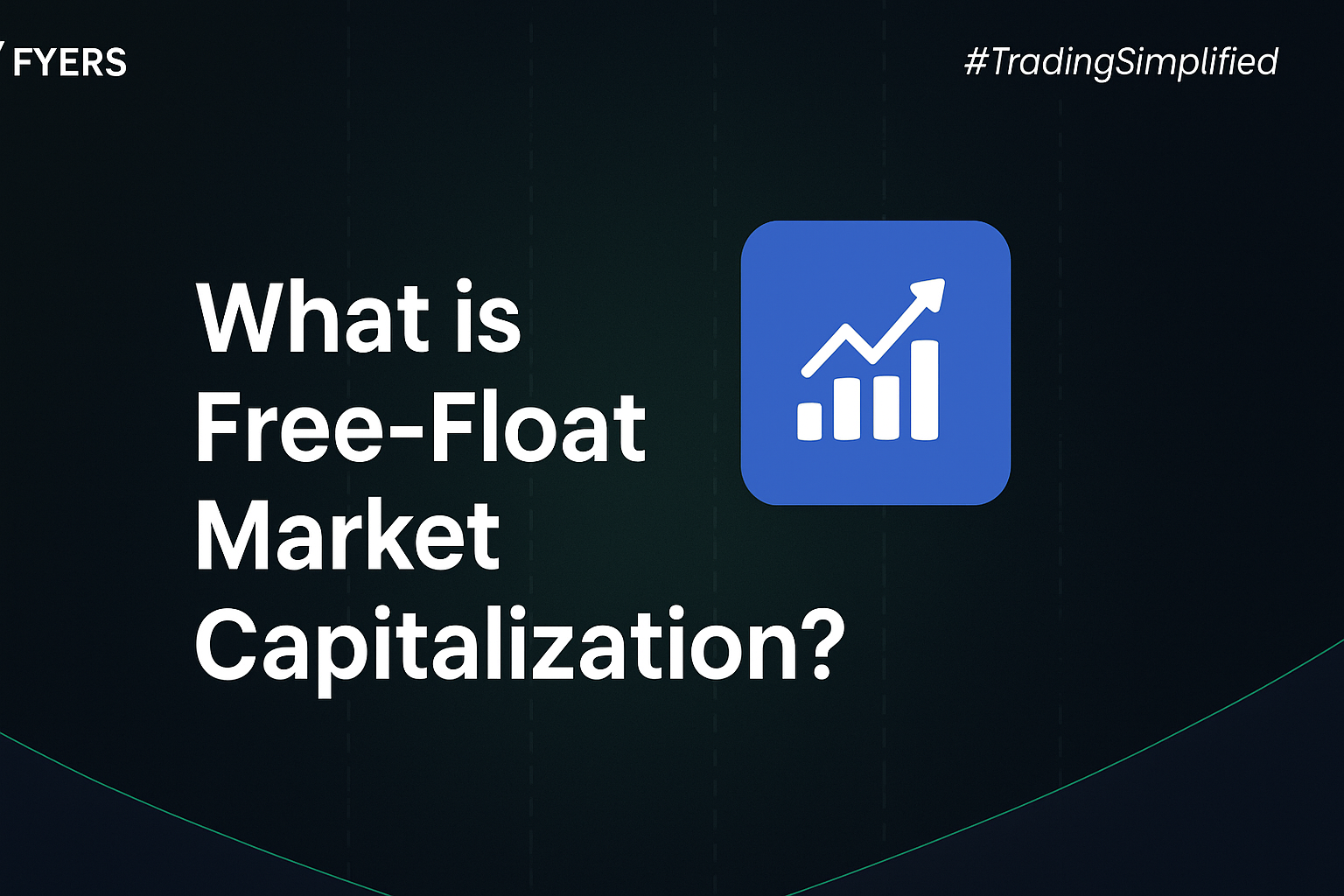

 31 Aug, 2025
31 Aug, 2025
 4 mins read
4 mins read

In the world of stock markets, measuring the size and value of a company is crucial for investors, regulators, and index providers. One of the most widely adopted ways to do this is through free-float market capitalization. Unlike the traditional market capitalization method, which considers all outstanding shares, the free-float approach focuses only on shares that are available for trading in the open market.
This distinction matters because it offers a more accurate reflection of a company’s real market value, as not all shares are actively traded. Let’s explore how this works, why it matters, and how it shapes indices like the Nifty and Sensex in India.
Market capitalization plays a key role in ranking companies, constructing stock indices, and guiding investment decisions. However, if all outstanding shares are considered—many of which may be locked with promoters, the government, or strategic investors—the valuation may not truly represent market liquidity.
The free-float market capitalization method solves this by considering only those shares that are freely available for public trading. This ensures:
Better liquidity reflection – Only tradable shares are counted.
Accurate index weightage – Indices give more weight to companies with higher free-float shares.
Transparency – It reduces distortions caused by promoter holdings.
This approach is especially useful for foreign investors who prefer investing in companies with sufficient public participation.
To understand the difference, let’s compare both methods step by step:
Market Capitalization = Share Price × Total Outstanding Shares
Free−Float Market Capitalization = Share Price × Free−Float Shares
Here, free-float shares refer to those not held by promoters, government bodies, or strategic investors.
Example:
Suppose a company has:
Share price = ₹500
Total outstanding shares = 10 crore
Promoter holdings = 40% (4 crore shares)
Traditional Market Cap = ₹500 × 10 crore = ₹5,000 crore
Free-Float Market Cap = ₹500 × 6 crore (public shares) = ₹3,000 crore
This clearly shows how the free-float method provides a more realistic picture of investable market value.
The free-float method is now the global standard for index construction. Stock exchanges, including the NSE and BSE in India, use it for benchmarks like Nifty 50 and Sensex.
Key aspects of the method:
Excludes locked-in shares (promoter holdings, employee ESOPs, government stakes).
Considers only shares available for regular trading.
Provides weightage in indices based on free-float-adjusted value, not total market value.
This prevents large promoter-driven companies from dominating index weightings despite having limited public participation.
|
Aspect |
Free Float Market Capitalisation |
Total Market Capitalisation |
|---|---|---|
|
Shares considered |
Only tradable shares held by the public |
All outstanding shares |
|
Reflects liquidity? |
Yes |
No |
|
Used in index construction? |
Widely used (Nifty, Sensex, global indices) |
Rarely used |
|
Accuracy |
Provides a realistic picture of market value |
May overstate valuation |
Thus, while the total market cap is useful for understanding the overall size of a company, the free-float method is better suited for investment and index purposes.
The free-float approach offers several benefits:
Realistic Valuation: Reflects only shares actually available in the market.
Improved Liquidity Measurement: Helps investors assess tradability of stocks.
Fairer Index Representation: Prevents companies with high promoter stakes from having an outsized influence.
Global Standard: Makes Indian indices comparable with global benchmarks like the S&P 500 and FTSE.
While widely adopted, the method is not without limitations:
Complexity in Calculation: Requires accurate disclosure of promoter and institutional holdings.
Possible Underestimation: Companies with high promoter stakes may appear undervalued in free-float terms.
Dynamic Adjustments: Free-float percentages change with shareholding patterns, requiring regular updates.
In India, the Nifty 50 and Sensex are based on the free-float methodology. Let’s take an example:
Company A – Market Cap = ₹2 lakh crore, Promoter holding = 70% → Free-float cap = ₹60,000 crore.
Company B – Market Cap = ₹1 lakh crore, Promoter holding = 30% → Free-float cap = ₹70,000 crore.
Even though Company A is larger by total market value, Company B will have a higher weight in the index because of its greater public float.
This ensures that the index reflects where actual trading activity is happening.
The free-float market capitalization method has become the preferred way of measuring company size for stock indices and investment purposes. By focusing only on tradable shares, it provides a more accurate and transparent picture of market value.
For investors, understanding the difference between free float and total market cap helps in better interpreting index movements and company valuations. While it has some limitations, the method remains the benchmark for modern financial markets.
It is a method of valuing a company based on the number of shares available for public trading, excluding promoter and government holdings.
Multiply the share price by the number of free-float shares (shares available for public trading).
Total float includes all outstanding shares, while free float includes only shares that can be freely traded in the market.
Because it reflects liquidity and ensures fair index weightage, preventing promoter-heavy companies from dominating.
Calculate your Net P&L after deducting all the charges like Tax, Brokerage, etc.
Find your required margin.
Calculate the average price you paid for a stock and determine your total cost.
Estimate your investment growth. Calculate potential returns on one-time investments.
Forecast your investment returns. Understand potential growth with regular contributions.